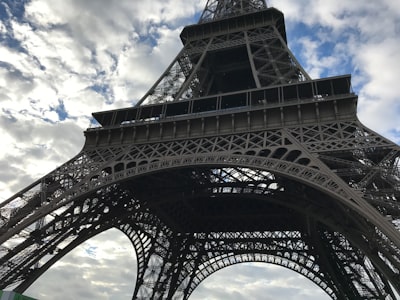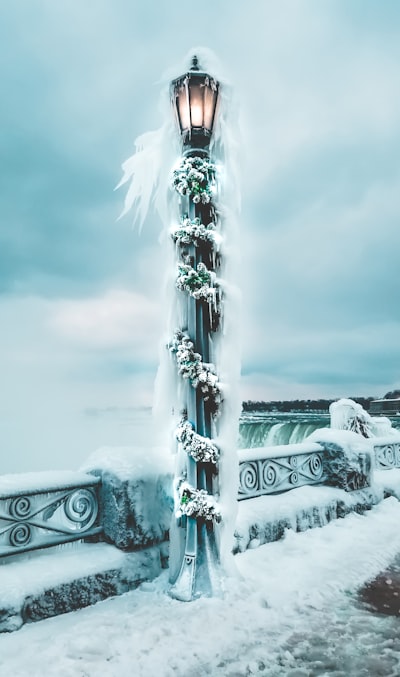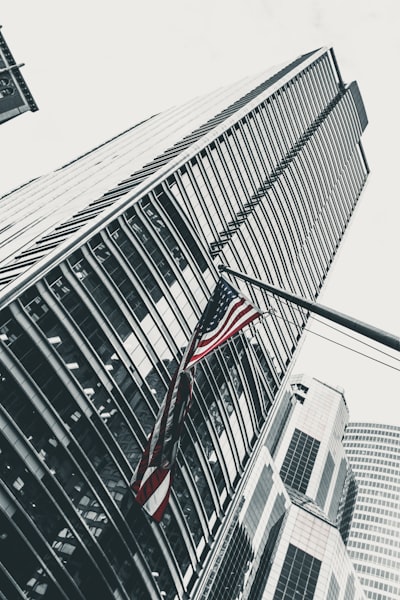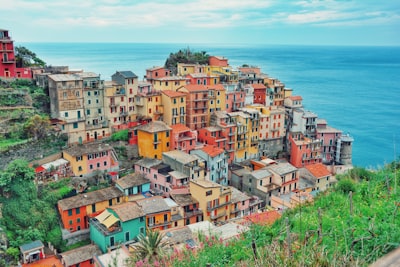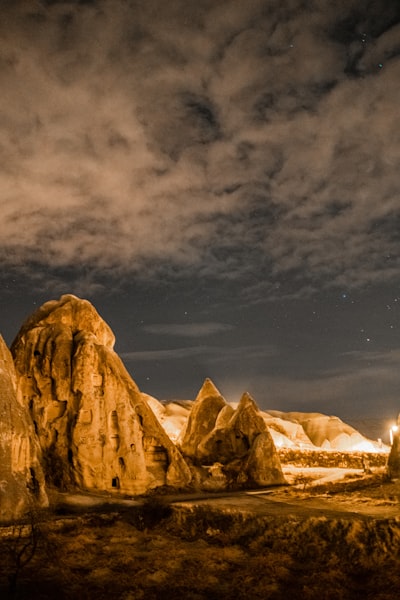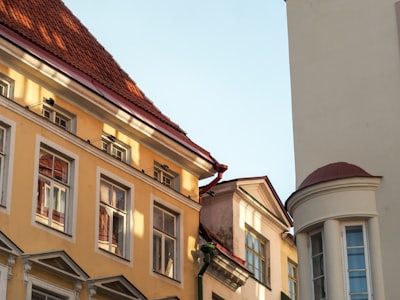Edinburgh Castle: Perched atop an ancient volcanic rock, Edinburgh Castle is the iconic centerpiece of the city. Explore the historic fortress, witness the firing of the One o'Clock Gun, and marvel at the stunning views of the city. Royal Mile: The Royal Mile is the heart of Edinburgh's Old Town, stretching from Edinburgh Castle to the Palace of Holyroodhouse. Stroll along this vibrant street, lined with charming shops, pubs, and historic landmarks such as St. Giles' Cathedral and the John Knox House. Palace of Holyroodhouse: This royal residence is the Queen's official residence in Scotland. Tour the palace's opulent state apartments, explore the ruins of the 12th-century Holyrood Abbey, and learn about the rich history of the Scottish monarchy. Arthur's Seat: Climb to the top of this extinct volcano for breathtaking panoramic views of Edinburgh and the surrounding countryside. The hike offers a peaceful escape from the city and a chance to immerse yourself in the natural beauty of the region. National Museum of Scotland: Discover the rich history and culture of Scotland at this world-class museum. Explore exhibits on Scottish history, art, science, and technology, and marvel at the impressive collections, including the famous Lewis Chessmen. Calton Hill: Ascend to the top of Calton Hill for stunning views of the city and the Firth of Forth. The hill is home to several iconic landmarks, including the National Monument, the Nelson Monument, and the Dugald Stewart Monument. Grassmarket: This lively square in the Old Town was once the site of public executions and is now a hub of shops, pubs, and restaurants. Wander through the charming cobblestone streets, browse the local artisan stalls, and soak up the vibrant atmosphere. Dean Village: Escape the hustle and bustle of the city and explore this picturesque former milling village, nestled along the Water of Leith. Admire the charming historic buildings, stroll along the peaceful riverbanks, and discover the tranquil beauty of this hidden gem. Royal Botanic Garden: Immerse yourself in the stunning natural beauty of the Royal Botanic Garden, one of the world's finest botanical gardens. Stroll through the serene gardens, marvel at the impressive glasshouses, and learn about the diverse plant life. Whisky Distilleries: Edinburgh is the perfect base to explore Scotland's renowned whisky culture. Visit one of the many distilleries in the region, such as Glenkinchie or Dalmore, to learn about the art of whisky-making and sample the finest drams.
Buckingham Palace Buckingham Palace is the official London residence of the Queen. Visitors can tour the State Rooms, which are lavishly decorated and used for official functions. The Changing of the Guard ceremony, where the Queen's Guard is replaced, is a popular event to witness. Tower of London The Tower of London is a historic castle on the River Thames. It has served as a royal residence, prison, armory, and even a zoo. Visitors can see the Crown Jewels, explore the towers, and learn about the tower's rich history from the Yeoman Warders. Westminster Abbey Westminster Abbey is a Gothic abbey church that has been the site of royal weddings and coronations for centuries. It is the final resting place of many famous British figures, including kings, queens, and poets. Visitors can tour the abbey and attend religious services. Big Ben and the Houses of Parliament Big Ben is the iconic clock tower that is part of the Houses of Parliament, the meeting place of the UK government. Visitors can take a tour of the Houses of Parliament and learn about the history and workings of the British government. The British Museum The British Museum is one of the largest and most comprehensive museums in the world, with a collection that spans over two million years of human history and culture. Highlights include the Rosetta Stone, the Elgin Marbles, and the Egyptian mummies. Natural History Museum The Natural History Museum is a stunning Victorian-era building that houses an impressive collection of natural history exhibits, including dinosaur skeletons, wildlife dioramas, and geological specimens. Hyde Park Hyde Park is a large royal park in central London that is popular for walking, cycling, and relaxing. Visitors can also see the Serpentine, a large lake in the park, and the Diana, Princess of Wales Memorial Fountain. Trafalgar Square Trafalgar Square is a famous public square in central London, known for its iconic Nelson's Column and the surrounding fountains and statues. It is a popular gathering place and often hosts events and demonstrations. The London Eye The London Eye is a giant Ferris wheel on the South Bank of the River Thames that offers panoramic views of the city. Visitors can take a ride in one of the capsules and see landmarks like the Houses of Parliament and the Tower of London. Borough Market Borough Market is a lively and historic food market that offers a wide variety of fresh produce, baked goods, and international cuisine. It's a great place to sample local and artisanal foods. Camden Market Camden Market is a vibrant and eclectic market that is known for its alternative fashion, music, and street food. Visitors can browse the stalls, listen to live music, and soak up the unique atmosphere. Notting Hill Notting Hill is a trendy and colorful neighborhood in west London that is known for its charming streets, independent shops, and the annual Notting Hill Carnival.
The Old Town of Bern: Designated as a UNESCO World Heritage Site, the Old Town of Bern is a well-preserved medieval city center that features stunning architecture, cobblestone streets, and a unique covered walkway system known as the Lauben. Highlights include the Zytglogge, a medieval clock tower with an elaborate astronomical clock, and the Bern Minster, a magnificent Gothic cathedral. Bern Rose Garden: Perched atop the Kleine Schanze, the Bern Rose Garden offers breathtaking views of the Old Town and the Aare River. The garden features over 200 varieties of roses and is a popular spot for relaxation and scenic photography. Bern Historical Museum: This museum is one of the largest history museums in Switzerland, showcasing a comprehensive collection of artifacts and exhibits that trace the city's rich history, from its medieval origins to the present day. Highlights include the Bernese Costume Collection and the Bernese Silver Collection. Zentrum Paul Klee: Dedicated to the renowned Swiss artist Paul Klee, this modern art museum features an impressive collection of Klee's works, as well as temporary exhibitions and educational programs. Gurten: Bern's local mountain, the Gurten, offers stunning panoramic views of the city and the surrounding Alps. Visitors can reach the summit by taking a funicular railway or hiking, and enjoy a variety of outdoor activities, such as hiking, biking, and picnicking. Bern Bear Park: Located along the Aare River, the Bern Bear Park is home to a colony of bears, which have been the symbol of the city for centuries. Visitors can observe the bears in their natural habitat and learn about their history and conservation efforts. Bundeshaus (Swiss Parliament Building): The Bundeshaus, or Swiss Parliament Building, is a grand neoclassical structure that houses the Swiss federal government. Visitors can take guided tours of the building and learn about the country's political system. Munster Terrace: The Munster Terrace is a scenic viewpoint that offers panoramic vistas of the Old Town, the Aare River, and the distant Alps. It is a popular spot for photography and relaxation. Bern Minster: The Bern Minster is a magnificent Gothic cathedral that took over 400 years to complete. Visitors can climb the 344 steps to the top of the tower for stunning views of the city. Barengraben (Bear Pits): The Barengraben, or Bear Pits, are a historic bear enclosure located along the Aare River. Visitors can observe the bears and learn about their significance in Bern's history. Kunstmuseum Bern: The Kunstmuseum Bern is one of the oldest art museums in Switzerland, housing a vast collection of Swiss and international art, including works by renowned artists such as Paul Klee, Wassily Kandinsky, and Pablo Picasso. Bern Botanical Garden: The Bern Botanical Garden is a peaceful oasis in the heart of the city, featuring a diverse collection of plants, greenhouses, and themed gardens, such as the Alpine Garden and the Medicinal Plant Garden. Bern Historical Museum of the Swiss Abroad: This museum explores the history and experiences of Swiss citizens who have lived and worked abroad, offering insights into the country's global connections and diaspora. Bern Altstadt (Old Town): The Bern Altstadt, or Old Town, is a well-preserved medieval city center that is a UNESCO World Heritage Site. Visitors can stroll through the charming streets, admire the historic architecture, and explore the city's many shops, cafes, and restaurants. Zytglogge (Clock Tower): The Zytglogge is a medieval clock tower that features an elaborate astronomical clock and a daily performance of moving figures, making it one of Bern's most iconic landmarks.
Old Town (Altstadt): Explore the charming cobblestone streets and medieval architecture of Zurich's Old Town, a UNESCO World Heritage Site. Stroll along the Bahnhofstrasse, one of the world's most exclusive shopping streets, and visit the Grossmünster, a Romanesque-style church with stunning views from its towers. Lake Zurich (Zürichsee): Take a boat tour or simply relax by the serene waters of Lake Zurich, which offers stunning views of the city and the surrounding Alps. Enjoy the lively atmosphere of the lakeside promenades and parks, and visit the Bürkliplatz, a popular gathering spot for locals and tourists alike. Swiss National Museum (Schweizerisches Nationalmuseum): Discover the rich history and culture of Switzerland at the Swiss National Museum, which houses an impressive collection of artifacts, artworks, and interactive exhibits. Highlights include the medieval and Renaissance collections, as well as the museum's stunning neo-Renaissance architecture. Kunsthaus Zürich: Admire the impressive collection of art at the Kunsthaus Zürich, one of the most important art museums in Europe. The museum's highlights include works by renowned artists such as Monet, Picasso, and Warhol, as well as a strong focus on Swiss art. Uetliberg: Climb to the top of the Uetliberg, Zurich's local mountain, for panoramic views of the city and the surrounding countryside. Take the train or hike up the mountain and enjoy the scenic trails and hiking paths. Bahnhofstrasse: Indulge in some retail therapy along the Bahnhofstrasse, a renowned shopping street that is home to high-end boutiques, luxury brands, and department stores. Even if you're not in the mood to shop, the street is a great place to people-watch and soak up the vibrant atmosphere. Fraumünster Church: Visit the Fraumünster Church, a medieval church known for its stunning stained-glass windows designed by the renowned artist Marc Chagall. Admire the intricate and colorful designs that depict biblical scenes. Lindt & Sprüngli Chocolate Factory: Indulge in the ultimate chocolate experience at the Lindt & Sprüngli Chocolate Factory, where you can take a guided tour, learn about the chocolate-making process, and sample some of the finest Swiss chocolates. Rietberg Museum: Explore the diverse collection of non-European art and culture at the Rietberg Museum, which features exhibits from Asia, Africa, and the Americas. The museum's beautiful gardens and pavilions are also worth a visit. Zurich Opera House (Opernhaus Zürich): Attend a performance at the Zurich Opera House, one of the world's leading opera houses, and experience the city's vibrant cultural scene. The building itself is a stunning example of 19th-century architecture.
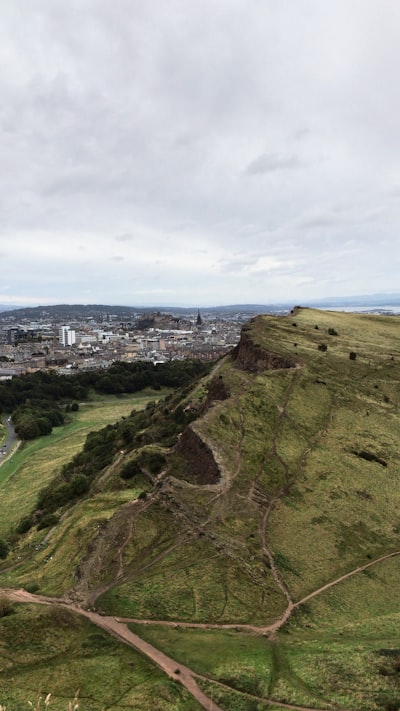
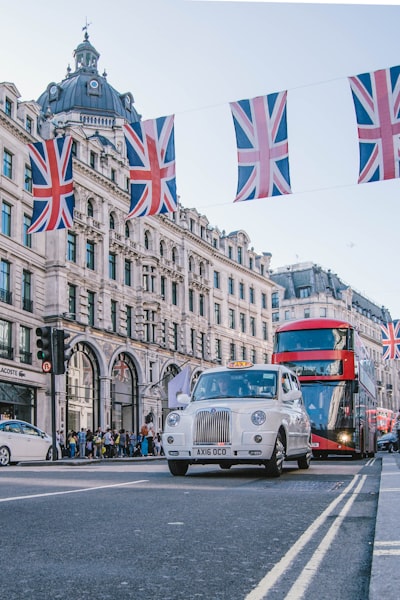
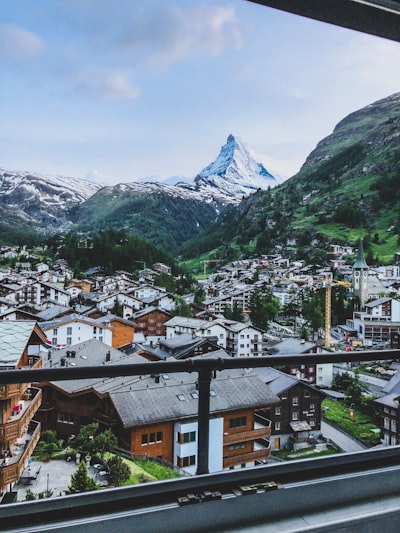
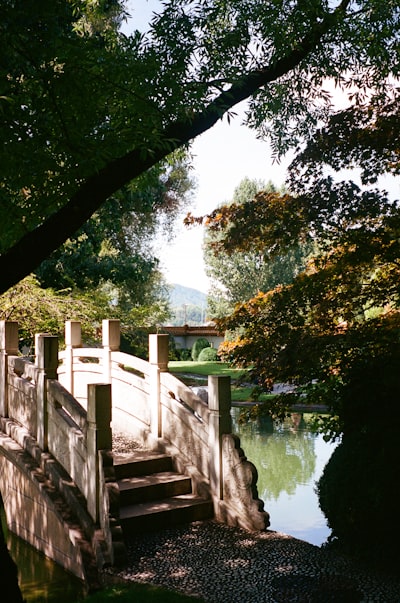
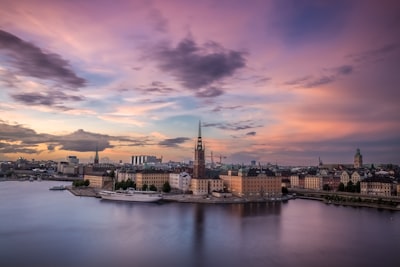

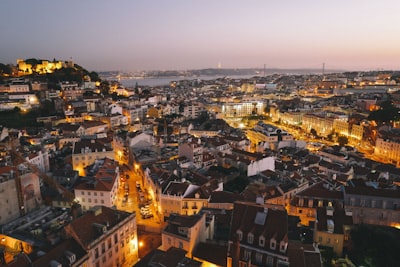
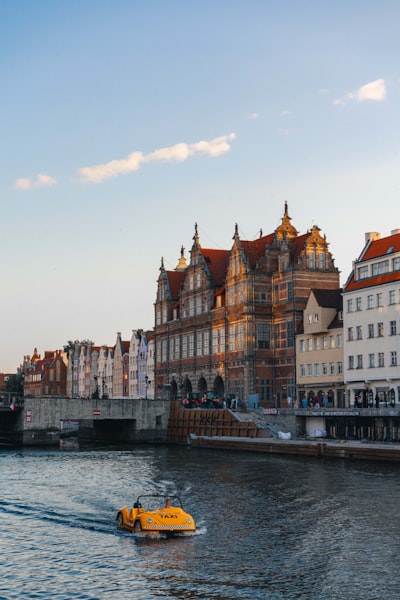
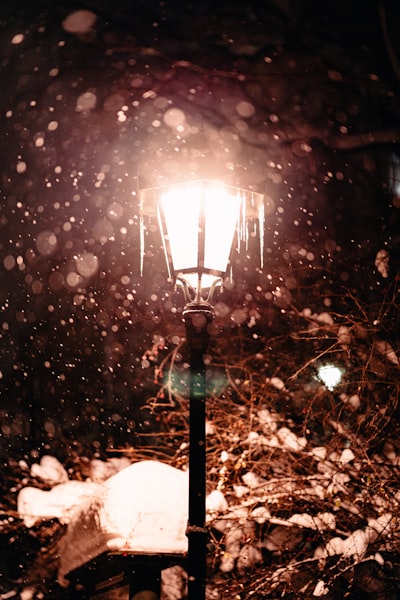

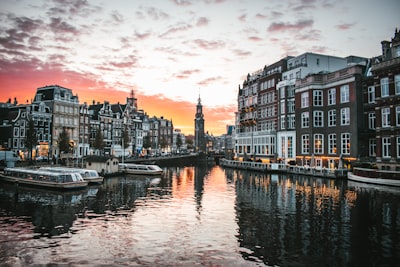
The Anne Frank House is a poignant and moving experience that allows visitors to step into the secret annex where Anne Frank and her family hid from the Nazis during World War II. Touring the historic building and learning about Anne's life and tragic fate is a powerful and unforgettable part of any visit to Amsterdam. The Rijksmuseum is the Netherlands' national museum and home to an incredible collection of Dutch Golden Age paintings, including masterpieces by Rembrandt, Vermeer, and Frans Hals. Highlights include Rembrandt's The Night Watch and Vermeer's The Milkmaid. The museum's stunning architecture and beautifully curated galleries make it a must-see for art and history lovers. The Van Gogh Museum houses the world's largest collection of works by the iconic Dutch post-impressionist painter Vincent van Gogh. Visitors can admire famous paintings like Sunflowers, The Bedroom, and Starry Night Over the Rhone, as well as learn about Van Gogh's tumultuous life and artistic development. The Jordaan neighborhood is a charming, picturesque area of Amsterdam known for its quaint streets, cozy cafes, and unique boutiques. Wandering through the Jordaan's picturesque canals and alleyways is a wonderful way to experience the city's historic character and local culture. The Bloemenmarkt, or Flower Market, is a vibrant and colorful floating flower market located along the Singel canal. Visitors can browse stalls selling a dazzling array of tulips, orchids, and other blooms, as well as purchase bulbs, seeds, and other gardening products. The Heineken Experience is an interactive and immersive tour of the historic Heineken brewery, where visitors can learn about the beer-making process, sample fresh Heineken, and even pour their own perfect pint. The Vondelpark is a sprawling, 120-acre urban oasis in the heart of Amsterdam. Visitors can stroll, bike, or rollerblade through the park's lush greenery, visit the open-air theater, or relax at one of the many cafes and restaurants. The Red Light District, or De Wallen, is Amsterdam's infamous adult entertainment district, known for its neon-lit windows, sex shops, and legalized prostitution. While controversial, the district offers a unique glimpse into Amsterdam's liberal and tolerant culture. The Begijnhof is a hidden courtyard that dates back to the 14th century and was once home to a community of Beguines, a group of devout Catholic women. The peaceful, historic site features charming houses and the hidden Begijnhof Chapel, offering a serene respite from the bustling city. The Amsterdam Dungeon is a thrilling, interactive experience that brings the city's dark history to life through live actors, special effects, and theatrical storytelling. Visitors can explore the dungeon's grim chambers and learn about Amsterdam's gruesome past.

La Sagrada Familia The iconic Basilica of the Sagrada Familia is Barcelona's most famous landmark and a must-see attraction. Designed by the renowned architect Antoni Gaudí, this unfinished Roman Catholic church is a stunning example of Catalan Modernist architecture. Visitors can marvel at the intricate facades, stained glass windows, and towering spires, as well as explore the interior with its grand naves and impressive vaulted ceilings. Park Güell Another of Gaudí's masterpieces, Park Güell is a whimsical public park filled with colorful, undulating structures, mosaic-covered benches, and stunning views of the city. Wander through the park's winding paths, admire the iconic dragon staircase, and enjoy the panoramic vistas from the Terrace of the Thirty-Six Columns. Las Ramblas A bustling tree-lined pedestrian mall, Las Ramblas is the heart of Barcelona's old town. Stroll along this vibrant street, taking in the lively atmosphere, street performers, outdoor cafes, and local vendors selling flowers, souvenirs, and more. Be sure to visit the iconic La Boqueria market, a bustling food hall with an incredible array of fresh produce, meats, seafood, and local delicacies. Barri Gòtic (Gothic Quarter) Immerse yourself in the charming medieval atmosphere of Barcelona's Barri Gòtic, the city's historic Gothic Quarter. Wander the narrow, winding streets lined with ancient buildings, churches, and plazas, and discover hidden gems like the 14th-century Barcelona Cathedral, the Plaça del Rei, and the remains of the ancient Roman walls. Montjuïc Offering panoramic views of the city, Montjuïc is a hill located southwest of the city center that is home to a variety of attractions. Explore the Montjuïc Castle, a 17th-century fortress with stunning vistas, visit the Miró Foundation to see the works of the renowned artist Joan Miró, and stroll through the beautiful Montjuïc Gardens. Passeig de Gràcia One of Barcelona's most prestigious boulevards, Passeig de Gràcia is a shopper's paradise lined with high-end boutiques, restaurants, and architectural gems. Admire the iconic buildings designed by Gaudí, including Casa Batlló and La Pedrera, and stop to marvel at the stunning Fountain of the Three Graces. Museu Picasso Housing one of the world's most extensive collections of Pablo Picasso's works, the Museu Picasso is a must-visit for art enthusiasts. Explore the artist's early works, his Blue and Rose periods, and his interpretations of the Old Masters, all displayed in a beautiful 13th-century medieval palace. Tibidabo Offering panoramic views of Barcelona, Tibidabo is a mountain that can be reached by a historic funicular railway. At the top, visitors can enjoy the Tibidabo Amusement Park, with its vintage rides and attractions, as well as the Sagrat Cor church, a stunning neo-Gothic temple with stunning city views. Barceloneta Beach No trip to Barcelona is complete without a visit to the city's iconic Barceloneta Beach. Relax on the golden sands, take a dip in the Mediterranean Sea, and enjoy the lively atmosphere of the beachfront promenade, lined with seafood restaurants, bars, and beach clubs. Mercat de la Boqueria Immerse yourself in the vibrant sights, sounds, and smells of Barcelona's famous Mercat de la Boqueria, one of the largest and oldest food markets in Europe. Wander through the stalls, sampling fresh produce, meats, seafood, and local delicacies, and soak up the lively atmosphere of this bustling market.

The Brandenburg Gate is one of the most iconic landmarks in Berlin. This 18th-century neoclassical monument was once a symbol of division during the Cold War, but now represents German unity. Visitors can walk through the gate and explore the surrounding Pariser Platz, home to embassies, hotels, and cafes. The Reichstag Building is the seat of the German parliament and features a stunning glass dome that offers panoramic views of the city. Visitors can take a guided tour of the building and climb to the top of the dome for breathtaking vistas of Berlin. The Berlin Wall Memorial is a poignant reminder of the city's divided past. The memorial includes preserved sections of the Berlin Wall, as well as an underground tunnel that was used for escapes. Visitors can learn about the history of the wall and the impact it had on the city and its people. The East Side Gallery is the longest remaining section of the Berlin Wall, featuring vibrant murals painted by artists from around the world. Visitors can stroll along the 1.3-kilometer stretch of the wall and admire the powerful artwork. The Pergamon Museum is one of the most impressive museums in Berlin, housing a collection of ancient Greek and Roman artifacts, including the Pergamon Altar and the Ishtar Gate of Babylon. Visitors can explore the museum's impressive architecture and immerse themselves in the rich history of these ancient civilizations. The Charlottenburg Palace is the largest royal summer residence in Berlin and a stunning example of Prussian baroque architecture. Visitors can tour the opulent rooms and gardens, and learn about the history of the Hohenzollern dynasty. The Tiergarten is a vast urban park in the heart of Berlin, featuring lush gardens, winding paths, and the iconic Victory Column monument. Visitors can enjoy a peaceful stroll or rent a bike to explore the park's expansive grounds. The Potsdamer Platz is a modern, vibrant area of Berlin that was once divided by the Berlin Wall. Today, it is home to a variety of shops, restaurants, and cultural attractions, including the Sony Center and the Daimler Contemporary art gallery. The Gendarmenmarkt is a beautiful square in the heart of Berlin, featuring the Konzerthaus concert hall and the twin cathedrals of Deutscher Dom and Französischer Dom. Visitors can enjoy the lively atmosphere and explore the nearby shops and cafes. The Topography of Terror is a sobering museum that explores the history of the Nazi regime and the atrocities committed during the Holocaust. Visitors can learn about the rise and fall of the Nazi party and the impact it had on the city of Berlin. The Boat Tours on the Spree River offer a unique perspective of Berlin, allowing visitors to see the city's landmarks and architecture from the water. Visitors can choose from a variety of tour options, including sightseeing cruises and dinner cruises. The Berlin Zoo and Aquarium are two of the city's most popular attractions, featuring a diverse collection of animals and marine life. Visitors can explore the zoo's expansive grounds and see a wide range of species, from elephants and giraffes to penguins and sharks. The Kaufhaus des Westens (KaDeWe) is the largest department store in continental Europe and a must-visit destination for shopping enthusiasts. Visitors can browse the store's vast selection of high-end fashion, cosmetics, and gourmet food. The Berliner Philharmonie is home to the renowned Berlin Philharmonic Orchestra and is a world-class venue for classical music performances. Visitors can attend a concert or take a tour of the iconic building, designed by architect Hans Scharoun. The Reichstag Building, the Pergamon Museum, and the Charlottenburg Palace are just a few of the many must-see attractions in Berlin. Whether you're interested in history, art, architecture, or culture, there is something for everyone in this vibrant and dynamic city.

The Old Town of Bern: Designated as a UNESCO World Heritage Site, the Old Town of Bern is a well-preserved medieval city center that features stunning architecture, cobblestone streets, and a unique covered walkway system known as the Lauben. Highlights include the Zytglogge, a medieval clock tower with an elaborate astronomical clock, and the Bern Minster, a magnificent Gothic cathedral. Bern Rose Garden: Perched atop the Kleine Schanze, the Bern Rose Garden offers breathtaking views of the Old Town and the Aare River. The garden features over 200 varieties of roses and is a popular spot for relaxation and scenic photography. Bern Historical Museum: This museum is one of the largest history museums in Switzerland, showcasing a comprehensive collection of artifacts and exhibits that trace the city's rich history, from its medieval origins to the present day. Highlights include the Bernese Costume Collection and the Bernese Silver Collection. Zentrum Paul Klee: Dedicated to the renowned Swiss artist Paul Klee, this modern art museum features an impressive collection of Klee's works, as well as temporary exhibitions and educational programs. Gurten: Bern's local mountain, the Gurten, offers stunning panoramic views of the city and the surrounding Alps. Visitors can reach the summit by taking a funicular railway or hiking, and enjoy a variety of outdoor activities, such as hiking, biking, and picnicking. Bern Bear Park: Located along the Aare River, the Bern Bear Park is home to a colony of bears, which have been the symbol of the city for centuries. Visitors can observe the bears in their natural habitat and learn about their history and conservation efforts. Bundeshaus (Swiss Parliament Building): The Bundeshaus, or Swiss Parliament Building, is a grand neoclassical structure that houses the Swiss federal government. Visitors can take guided tours of the building and learn about the country's political system. Munster Terrace: The Munster Terrace is a scenic viewpoint that offers panoramic vistas of the Old Town, the Aare River, and the distant Alps. It is a popular spot for photography and relaxation. Bern Minster: The Bern Minster is a magnificent Gothic cathedral that took over 400 years to complete. Visitors can climb the 344 steps to the top of the tower for stunning views of the city. Barengraben (Bear Pits): The Barengraben, or Bear Pits, are a historic bear enclosure located along the Aare River. Visitors can observe the bears and learn about their significance in Bern's history. Kunstmuseum Bern: The Kunstmuseum Bern is one of the oldest art museums in Switzerland, housing a vast collection of Swiss and international art, including works by renowned artists such as Paul Klee, Wassily Kandinsky, and Pablo Picasso. Bern Botanical Garden: The Bern Botanical Garden is a peaceful oasis in the heart of the city, featuring a diverse collection of plants, greenhouses, and themed gardens, such as the Alpine Garden and the Medicinal Plant Garden. Bern Historical Museum of the Swiss Abroad: This museum explores the history and experiences of Swiss citizens who have lived and worked abroad, offering insights into the country's global connections and diaspora. Bern Altstadt (Old Town): The Bern Altstadt, or Old Town, is a well-preserved medieval city center that is a UNESCO World Heritage Site. Visitors can stroll through the charming streets, admire the historic architecture, and explore the city's many shops, cafes, and restaurants. Zytglogge (Clock Tower): The Zytglogge is a medieval clock tower that features an elaborate astronomical clock and a daily performance of moving figures, making it one of Bern's most iconic landmarks.
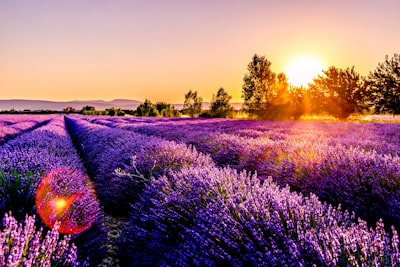
The Miroir d'Eau (Water Mirror): This iconic attraction is the world's largest reflecting pool, located in front of the Place de la Bourse. Visitors can enjoy the mesmerizing reflections of the surrounding buildings and the occasional mist that creates a magical atmosphere. Cathédrale Saint-André: This stunning Gothic cathedral, dating back to the 11th century, is a must-visit for its impressive architecture and historical significance. Admire the intricate stone carvings, stained-glass windows, and the impressive spire that dominates the city's skyline. Quartier Saint-Pierre: Explore the charming historic district of Bordeaux, known for its well-preserved 18th-century buildings, narrow streets, and lively cafes and boutiques. Wander through the picturesque squares and discover the vibrant local culture. Musée d'Aquitaine: This museum offers a comprehensive overview of Bordeaux's rich history, from its Gallo-Roman origins to the present day. Explore the extensive collection of archaeological artifacts, paintings, and interactive exhibits that showcase the city's cultural heritage. Pont de Pierre: Admire the stunning 19th-century stone bridge that spans the Garonne River, offering panoramic views of the city and the riverbanks. Take a leisurely stroll across the bridge or enjoy the lively atmosphere along the riverfront. Jardin Public: Escape the bustling city and immerse yourself in the tranquility of Bordeaux's beautiful public garden. Stroll through the lush greenery, admire the ornamental fountains, and visit the Musée des Beaux-Arts, which is located within the garden. Cité du Vin: Discover the world of wine at this state-of-the-art museum, dedicated to the history, culture, and production of wine. Explore interactive exhibits, attend tastings, and learn about the diverse wine regions of the world, including the renowned Bordeaux vineyards. Palais Gallien: Uncover the remnants of a Roman amphitheater dating back to the 2nd century AD. This archaeological site provides a glimpse into Bordeaux's ancient past and the city's Roman heritage. Porte Cailhau: Marvel at this impressive 15th-century gate, which was once part of the city's fortifications. Admire the intricate Gothic architecture and the ornate decorations that adorn the structure. Chartrons District: Stroll through this charming neighborhood, known for its antique shops, art galleries, and trendy cafes. Soak in the relaxed atmosphere and browse the unique offerings of the local artisans and merchants. Parc Bordelais: Enjoy a peaceful respite in this expansive urban park, featuring lush gardens, winding paths, and a picturesque lake. Rent a boat, go for a leisurely stroll, or simply relax and take in the serene surroundings. Basilique Saint-Michel: Marvel at the towering Gothic-style basilica, known for its impressive spire that dominates the city's skyline. Explore the interior and admire the intricate stained-glass windows and ornate architectural details. Château Lynch-Bages: Venture out of the city to visit this renowned Médoc winery, known for its exceptional Bordeaux wines. Participate in a guided tour and tasting to learn about the region's winemaking traditions and savor the flavors of this iconic wine.
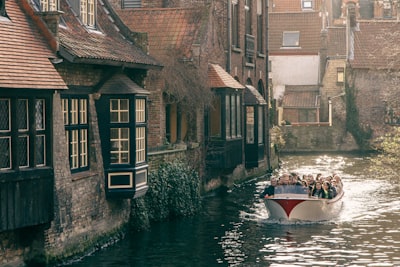
The Markt The Markt is the central market square in Bruges and one of the city's most iconic landmarks. Surrounded by historic buildings, including the Belfry of Bruges, the Markt is a lively hub of activity with outdoor cafes, horse-drawn carriage rides, and street performers. Visitors can climb the 366 steps to the top of the Belfry's 83-meter-tall tower for panoramic views of the city. Basilica of the Holy Blood The Basilica of the Holy Blood is a 12th-century church that houses a revered relic - a vial said to contain the blood of Jesus Christ. The basilica features stunning Romanesque and Gothic architecture, with an upper chapel decorated in ornate Renaissance style. Visitors can attend mass and view the relic during scheduled viewings. Minnewater Park Also known as the "Lake of Love," Minnewater Park is a picturesque green space with a tranquil lake, swans, and medieval bridges. The park is a popular spot for strolling, relaxing, and enjoying views of the historic buildings that line the waterfront. Groeningemuseum The Groeningemuseum is home to an impressive collection of Flemish Primitive and Early Netherlandish paintings, including works by Jan van Eyck, Hans Memling, and Gerard David. The museum offers a comprehensive overview of Bruges' rich artistic heritage. Beguinage The Beguinage is a well-preserved 13th-century complex of historic houses and a convent that was once home to a community of Beguines, lay religious women who lived and worked together but did not take formal religious vows. Visitors can explore the tranquil, tree-lined courtyards and visit the Beguinage's Gothic-style church. Burg Square Burg Square is a picturesque public square surrounded by impressive medieval and Renaissance-era buildings, including the Gothic-style Town Hall and the Basilica of the Holy Blood. The square is a popular gathering place and hosts various events and festivals throughout the year. Canals and Boat Tours Bruges is often referred to as the "Venice of the North" due to its extensive network of canals. Visitors can take a leisurely boat tour to admire the city's historic architecture, bridges, and charming waterfront scenes from a unique perspective.
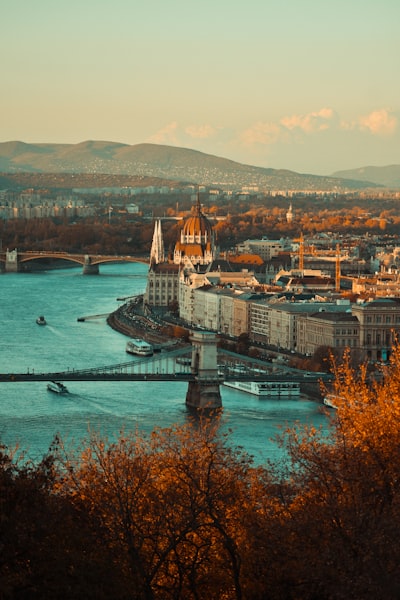
The Hungarian Parliament Building is one of the most iconic landmarks in Budapest. This stunning neo-Gothic structure sits on the banks of the Danube River and is the largest parliament building in Europe. Visitors can take guided tours to admire the lavish interior, including the impressive central hall and the Hungarian Crown Jewels. Buda Castle is a UNESCO World Heritage site that has been the royal palace and seat of Hungarian kings for centuries. The castle complex features impressive Baroque and Gothic architecture, as well as museums, galleries, and stunning views over the Danube. Highlights include the Matthias Church, the Fisherman's Bastion, and the Hungarian National Gallery. The Széchenyi Thermal Baths are one of the largest and most famous spa complexes in Europe. Housed in a stunning Neo-Renaissance building, the baths feature over a dozen indoor and outdoor pools fed by natural thermal springs. Visitors can enjoy the therapeutic waters, saunas, and massage treatments. The Dohány Street Synagogue is the largest synagogue in Europe and the second-largest in the world. This magnificent Moorish-style building is an architectural masterpiece and an important center of Jewish culture and history in Hungary. Visitors can tour the synagogue, the Jewish Museum, and the Holocaust Memorial. The Fisherman's Bastion is a whimsical neo-Gothic and neo-Romanesque terrace on the Buda side of the Danube. Offering panoramic views of the city, the Bastion features seven ornate towers representing the seven Magyar tribes that founded Hungary. It's a popular spot for photos and enjoying the stunning vistas. The Chain Bridge is one of the most iconic landmarks in Budapest, connecting the Buda and Pest sides of the city. This suspension bridge, completed in 1849, was the first permanent crossing over the Danube and is a masterpiece of 19th-century engineering. Strolling across the bridge offers beautiful views of the river and the surrounding landmarks. St. Stephen's Basilica is a neoclassical Catholic cathedral and one of the tallest buildings in Budapest. Visitors can admire the stunning interior, including the ornate altar and the dome's impressive frescoes. The basilica also offers panoramic views from its observation deck. The Gellért Baths are another of Budapest's famous thermal spa complexes, housed in a beautiful Art Nouveau building. The baths feature indoor and outdoor pools, saunas, and a range of wellness treatments. Visitors can enjoy the therapeutic waters and the stunning architecture of the complex. The Great Market Hall is a lively indoor market where visitors can browse stalls selling traditional Hungarian foods, crafts, and souvenirs. The neo-Gothic building itself is an architectural highlight, with a stunning vaulted ceiling and colorful tiled roof. The Hungarian State Opera House is a magnificent neo-Renaissance building and one of the most prestigious opera houses in Europe. Visitors can attend performances or take guided tours to admire the opulent interior, including the stunning auditorium and the grand staircase. The Buda Hills offer a peaceful escape from the bustling city, with hiking trails, scenic viewpoints, and the historic Buda Castle. Visitors can take the Buda Castle Funicular up the hill for stunning panoramic views or explore the Buda Hills by hiking or taking the Children's Railway. The Memento Park is an open-air museum that displays statues and monuments from the communist era in Hungary. Visitors can explore the park and learn about the country's history under Soviet rule. The Museum of Fine Arts houses an impressive collection of European art, including works by Raphael, Titian, and Rembrandt. The museum's neoclassical building is also a architectural highlight. The House of Terror Museum is a poignant memorial to the victims of fascist and communist regimes in Hungary. The museum is housed in the former headquarters of the Arrow Cross Party and the ÁVH secret police, and offers a powerful and educational experience. The Vajdahunyad Castle is a whimsical neo-Romanesque and neo-Gothic castle located in City Park. The castle complex features several different architectural styles and houses the Hungarian Agricultural Museum. These are just a few of the many must-see attractions in Budapest, Hungary. From the city's iconic landmarks and historic sites to its vibrant cultural institutions and natural wonders, there is something for every traveler to discover in this fascinating destination.
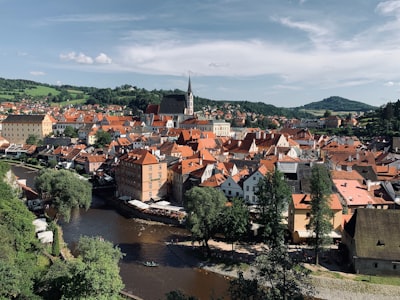
The Cesky Krumlov Castle: This magnificent castle, dating back to the 13th century, is the second-largest castle complex in the Czech Republic after Prague Castle. Explore the grand castle halls, admire the intricate Renaissance and Baroque architecture, and marvel at the stunning views of the town from the castle's hilltop location. The Historic Town Center: Wander through the charming cobblestone streets of Cesky Krumlov's historic town center, a UNESCO World Heritage Site. Admire the colorful, well-preserved buildings, many of which date back to the 16th century. Stop to explore the quaint shops, cafes, and galleries that line the streets, offering a glimpse into the town's vibrant cultural heritage. The Cesky Krumlov Castle Gardens: The castle's expansive gardens are a true delight for visitors. Stroll through the beautifully manicured grounds, admire the intricate fountains and sculptures, and enjoy the stunning views of the Vltava River and the town below. The Revolving Auditorium: Cesky Krumlov is home to a unique revolving auditorium, one of the few remaining in the world. This ingenious 18th-century theater features a rotating stage that allows for seamless scene changes and a truly immersive theatrical experience. The Egon Schiele Art Centrum: Art enthusiasts will appreciate the Egon Schiele Art Centrum, which houses a collection of works by the renowned Austrian expressionist painter Egon Schiele. Explore the museum's exhibitions and learn about the artist's life and influence. The Cloak Bridge: Spanning the Vltava River, the Cloak Bridge is a picturesque covered bridge that offers stunning views of the town and the castle. Take a stroll across the bridge and admire the intricate architectural details. The Minorite Monastery: This well-preserved 13th-century monastery is a testament to the town's rich religious history. Explore the beautiful Gothic and Baroque-style interiors and learn about the role of the Minorite order in Cesky Krumlov's past. The Cesky Krumlov Brewery: For a taste of the local culture, visit the Cesky Krumlov Brewery, one of the oldest breweries in the country. Take a tour of the facilities, learn about the brewing process, and sample the town's renowned beer. The Cesky Krumlov Chateau: In addition to the castle, the town is also home to the Cesky Krumlov Chateau, a magnificent Renaissance-style palace that once served as the residence of the Rosenberg family, one of the most influential noble families in Bohemia. The Vltava River: Explore the Vltava River, which winds its way through the heart of Cesky Krumlov, by taking a boat tour or renting a kayak or canoe. Enjoy the serene views of the town and the surrounding countryside from the water. Whether you're interested in history, architecture, art, or simply soaking in the charming atmosphere, Cesky Krumlov offers a wealth of must-see attractions that will leave a lasting impression on any traveler.
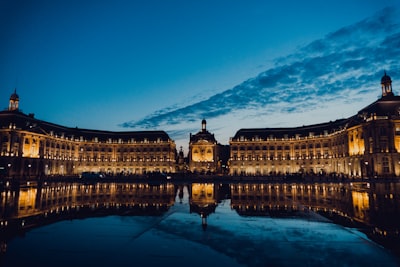
1. Mont Blanc: The highest mountain in the Alps, Mont Blanc offers breathtaking views and a variety of outdoor activities. Visitors can take the Aiguille du Midi cable car to the top of the mountain for panoramic vistas or explore the nearby glaciers and hiking trails. 2. Mer de Glace: This stunning glacier, the largest in France, can be accessed by the Montenvers Railway. Visitors can explore the ice cave and learn about the glacier's formation and history at the Glaciorium exhibition center. 3. Aiguille du Midi: This iconic peak, accessible by cable car, provides stunning views of the surrounding mountains and the chance to experience the thrill of standing on the edge of a 3,842-meter-high platform. 4. Chamonix Town Center: Stroll through the charming town center, lined with traditional Alpine architecture, boutiques, and cafes. Explore the local markets, sample regional cuisine, and soak in the vibrant atmosphere. 5. Lac Blanc: This serene alpine lake, located in the Aiguilles Rouges Nature Reserve, offers breathtaking views of the surrounding peaks. Hike to the lake for a peaceful escape and the chance to spot wildlife. 6. Brévent-Flégère Cable Car: Take this cable car to access the Brévent and Flégère ski areas, which offer panoramic views of the Mont Blanc massif and opportunities for hiking and mountain biking in the summer. 7. Aiguille des Grands Montets: Climb to the top of this iconic peak for stunning views of the Argentière glacier and the surrounding mountains. The area is also popular for skiing and snowboarding in the winter. 8. Vallée Blanche: Experienced skiers can embark on the Vallée Blanche, a renowned off-piste ski descent that takes them through the heart of the Mont Blanc massif, offering unparalleled views and a thrilling adventure. 9. Chamonix Alpine Museum: Learn about the history and culture of Chamonix at this museum, which features exhibits on mountaineering, local traditions, and the region's natural environment. 10. Montenvers Railway: Ride this historic rack railway to the Mer de Glace glacier, where visitors can explore the ice cave and learn about the glacier's formation and retreat. 11. Aiguille du Midi Skywalk: For the ultimate thrill, venture out onto the Aiguille du Midi Skywalk, a glass-floored platform that extends over the void, offering breathtaking views of the surrounding peaks. 12. Parc de Loisirs de Chamonix: This family-friendly park offers a variety of activities, including an adventure course, mini-golf, and a summer toboggan run, making it a great option for those traveling with children. Chamonix-France is a true outdoor paradise, offering a wealth of natural wonders and adventure opportunities for visitors of all ages and interests. Whether you're seeking stunning mountain vistas, thrilling outdoor activities, or a glimpse into the region's rich history and culture, this destination has something to captivate every traveler.

1. Riomaggiore: The southernmost of the five villages, Riomaggiore is known for its colorful houses, narrow streets, and the iconic Via dell'Amore (Lover's Lane), a scenic coastal path that connects it to the neighboring town of Manarola. 2. Manarola: Perched on a rocky promontory, Manarola is renowned for its charming harbor, vibrant buildings, and the Sentiero Azzurro (Blue Trail), a hiking path that offers breathtaking views of the coastline. 3. Corniglia: The only village in the Cinque Terre that is not directly on the sea, Corniglia is situated atop a steep cliff and can be reached by a long staircase or a shuttle bus. Explore the quaint town square, visit the Church of St. Peter, and enjoy the panoramic vistas from the Belvedere. 4. Vernazza: Considered by many to be the most picturesque of the five villages, Vernazza boasts a natural harbor, a medieval castle, and a charming main square lined with cafes and restaurants. Don't miss the opportunity to hike the trails that lead to stunning viewpoints overlooking the town. 5. Monterosso al Mare: The largest of the Cinque Terre villages, Monterosso al Mare features a long sandy beach, a historic old town, and the impressive Church of St. John the Baptist. Explore the town's narrow streets, visit the Statue of the Giant, and enjoy the local seafood specialties. 6. Parco Nazionale delle Cinque Terre: The Cinque Terre National Park is a UNESCO World Heritage Site that encompasses the five villages and the surrounding natural landscape. Hike the scenic trails, discover hidden coves and beaches, and immerse yourself in the region's rich cultural heritage. 7. Santuario di Nostra Signora di Montenero: Located just outside of Riomaggiore, this historic sanctuary offers stunning views of the Cinque Terre coastline and is a popular pilgrimage site for visitors.











Edinburgh Castle: Perched atop an ancient volcanic rock, Edinburgh Castle is the iconic centerpiece of the city. Explore the historic fortress, witness the firing of the One o'Clock Gun, and marvel at the stunning views of the city. Royal Mile: The Royal Mile is the heart of Edinburgh's Old Town, stretching from Edinburgh Castle to the Palace of Holyroodhouse. Stroll along this vibrant street, lined with charming shops, pubs, and historic landmarks such as St. Giles' Cathedral and the John Knox House. Palace of Holyroodhouse: This royal residence is the Queen's official residence in Scotland. Tour the palace's opulent state apartments, explore the ruins of the 12th-century Holyrood Abbey, and learn about the rich history of the Scottish monarchy. Arthur's Seat: Climb to the top of this extinct volcano for breathtaking panoramic views of Edinburgh and the surrounding countryside. The hike offers a peaceful escape from the city and a chance to immerse yourself in the natural beauty of the region. National Museum of Scotland: Discover the rich history and culture of Scotland at this world-class museum. Explore exhibits on Scottish history, art, science, and technology, and marvel at the impressive collections, including the famous Lewis Chessmen. Calton Hill: Ascend to the top of Calton Hill for stunning views of the city and the Firth of Forth. The hill is home to several iconic landmarks, including the National Monument, the Nelson Monument, and the Dugald Stewart Monument. Grassmarket: This lively square in the Old Town was once the site of public executions and is now a hub of shops, pubs, and restaurants. Wander through the charming cobblestone streets, browse the local artisan stalls, and soak up the vibrant atmosphere. Dean Village: Escape the hustle and bustle of the city and explore this picturesque former milling village, nestled along the Water of Leith. Admire the charming historic buildings, stroll along the peaceful riverbanks, and discover the tranquil beauty of this hidden gem. Royal Botanic Garden: Immerse yourself in the stunning natural beauty of the Royal Botanic Garden, one of the world's finest botanical gardens. Stroll through the serene gardens, marvel at the impressive glasshouses, and learn about the diverse plant life. Whisky Distilleries: Edinburgh is the perfect base to explore Scotland's renowned whisky culture. Visit one of the many distilleries in the region, such as Glenkinchie or Dalmore, to learn about the art of whisky-making and sample the finest drams.

Buckingham Palace Buckingham Palace is the official London residence of the Queen. Visitors can tour the State Rooms, which are lavishly decorated and used for official functions. The Changing of the Guard ceremony, where the Queen's Guard is replaced, is a popular event to witness. Tower of London The Tower of London is a historic castle on the River Thames. It has served as a royal residence, prison, armory, and even a zoo. Visitors can see the Crown Jewels, explore the towers, and learn about the tower's rich history from the Yeoman Warders. Westminster Abbey Westminster Abbey is a Gothic abbey church that has been the site of royal weddings and coronations for centuries. It is the final resting place of many famous British figures, including kings, queens, and poets. Visitors can tour the abbey and attend religious services. Big Ben and the Houses of Parliament Big Ben is the iconic clock tower that is part of the Houses of Parliament, the meeting place of the UK government. Visitors can take a tour of the Houses of Parliament and learn about the history and workings of the British government. The British Museum The British Museum is one of the largest and most comprehensive museums in the world, with a collection that spans over two million years of human history and culture. Highlights include the Rosetta Stone, the Elgin Marbles, and the Egyptian mummies. Natural History Museum The Natural History Museum is a stunning Victorian-era building that houses an impressive collection of natural history exhibits, including dinosaur skeletons, wildlife dioramas, and geological specimens. Hyde Park Hyde Park is a large royal park in central London that is popular for walking, cycling, and relaxing. Visitors can also see the Serpentine, a large lake in the park, and the Diana, Princess of Wales Memorial Fountain. Trafalgar Square Trafalgar Square is a famous public square in central London, known for its iconic Nelson's Column and the surrounding fountains and statues. It is a popular gathering place and often hosts events and demonstrations. The London Eye The London Eye is a giant Ferris wheel on the South Bank of the River Thames that offers panoramic views of the city. Visitors can take a ride in one of the capsules and see landmarks like the Houses of Parliament and the Tower of London. Borough Market Borough Market is a lively and historic food market that offers a wide variety of fresh produce, baked goods, and international cuisine. It's a great place to sample local and artisanal foods. Camden Market Camden Market is a vibrant and eclectic market that is known for its alternative fashion, music, and street food. Visitors can browse the stalls, listen to live music, and soak up the unique atmosphere. Notting Hill Notting Hill is a trendy and colorful neighborhood in west London that is known for its charming streets, independent shops, and the annual Notting Hill Carnival.

The Old Town of Bern: Designated as a UNESCO World Heritage Site, the Old Town of Bern is a well-preserved medieval city center that features stunning architecture, cobblestone streets, and a unique covered walkway system known as the Lauben. Highlights include the Zytglogge, a medieval clock tower with an elaborate astronomical clock, and the Bern Minster, a magnificent Gothic cathedral. Bern Rose Garden: Perched atop the Kleine Schanze, the Bern Rose Garden offers breathtaking views of the Old Town and the Aare River. The garden features over 200 varieties of roses and is a popular spot for relaxation and scenic photography. Bern Historical Museum: This museum is one of the largest history museums in Switzerland, showcasing a comprehensive collection of artifacts and exhibits that trace the city's rich history, from its medieval origins to the present day. Highlights include the Bernese Costume Collection and the Bernese Silver Collection. Zentrum Paul Klee: Dedicated to the renowned Swiss artist Paul Klee, this modern art museum features an impressive collection of Klee's works, as well as temporary exhibitions and educational programs. Gurten: Bern's local mountain, the Gurten, offers stunning panoramic views of the city and the surrounding Alps. Visitors can reach the summit by taking a funicular railway or hiking, and enjoy a variety of outdoor activities, such as hiking, biking, and picnicking. Bern Bear Park: Located along the Aare River, the Bern Bear Park is home to a colony of bears, which have been the symbol of the city for centuries. Visitors can observe the bears in their natural habitat and learn about their history and conservation efforts. Bundeshaus (Swiss Parliament Building): The Bundeshaus, or Swiss Parliament Building, is a grand neoclassical structure that houses the Swiss federal government. Visitors can take guided tours of the building and learn about the country's political system. Munster Terrace: The Munster Terrace is a scenic viewpoint that offers panoramic vistas of the Old Town, the Aare River, and the distant Alps. It is a popular spot for photography and relaxation. Bern Minster: The Bern Minster is a magnificent Gothic cathedral that took over 400 years to complete. Visitors can climb the 344 steps to the top of the tower for stunning views of the city. Barengraben (Bear Pits): The Barengraben, or Bear Pits, are a historic bear enclosure located along the Aare River. Visitors can observe the bears and learn about their significance in Bern's history. Kunstmuseum Bern: The Kunstmuseum Bern is one of the oldest art museums in Switzerland, housing a vast collection of Swiss and international art, including works by renowned artists such as Paul Klee, Wassily Kandinsky, and Pablo Picasso. Bern Botanical Garden: The Bern Botanical Garden is a peaceful oasis in the heart of the city, featuring a diverse collection of plants, greenhouses, and themed gardens, such as the Alpine Garden and the Medicinal Plant Garden. Bern Historical Museum of the Swiss Abroad: This museum explores the history and experiences of Swiss citizens who have lived and worked abroad, offering insights into the country's global connections and diaspora. Bern Altstadt (Old Town): The Bern Altstadt, or Old Town, is a well-preserved medieval city center that is a UNESCO World Heritage Site. Visitors can stroll through the charming streets, admire the historic architecture, and explore the city's many shops, cafes, and restaurants. Zytglogge (Clock Tower): The Zytglogge is a medieval clock tower that features an elaborate astronomical clock and a daily performance of moving figures, making it one of Bern's most iconic landmarks.

Old Town (Altstadt): Explore the charming cobblestone streets and medieval architecture of Zurich's Old Town, a UNESCO World Heritage Site. Stroll along the Bahnhofstrasse, one of the world's most exclusive shopping streets, and visit the Grossmünster, a Romanesque-style church with stunning views from its towers. Lake Zurich (Zürichsee): Take a boat tour or simply relax by the serene waters of Lake Zurich, which offers stunning views of the city and the surrounding Alps. Enjoy the lively atmosphere of the lakeside promenades and parks, and visit the Bürkliplatz, a popular gathering spot for locals and tourists alike. Swiss National Museum (Schweizerisches Nationalmuseum): Discover the rich history and culture of Switzerland at the Swiss National Museum, which houses an impressive collection of artifacts, artworks, and interactive exhibits. Highlights include the medieval and Renaissance collections, as well as the museum's stunning neo-Renaissance architecture. Kunsthaus Zürich: Admire the impressive collection of art at the Kunsthaus Zürich, one of the most important art museums in Europe. The museum's highlights include works by renowned artists such as Monet, Picasso, and Warhol, as well as a strong focus on Swiss art. Uetliberg: Climb to the top of the Uetliberg, Zurich's local mountain, for panoramic views of the city and the surrounding countryside. Take the train or hike up the mountain and enjoy the scenic trails and hiking paths. Bahnhofstrasse: Indulge in some retail therapy along the Bahnhofstrasse, a renowned shopping street that is home to high-end boutiques, luxury brands, and department stores. Even if you're not in the mood to shop, the street is a great place to people-watch and soak up the vibrant atmosphere. Fraumünster Church: Visit the Fraumünster Church, a medieval church known for its stunning stained-glass windows designed by the renowned artist Marc Chagall. Admire the intricate and colorful designs that depict biblical scenes. Lindt & Sprüngli Chocolate Factory: Indulge in the ultimate chocolate experience at the Lindt & Sprüngli Chocolate Factory, where you can take a guided tour, learn about the chocolate-making process, and sample some of the finest Swiss chocolates. Rietberg Museum: Explore the diverse collection of non-European art and culture at the Rietberg Museum, which features exhibits from Asia, Africa, and the Americas. The museum's beautiful gardens and pavilions are also worth a visit. Zurich Opera House (Opernhaus Zürich): Attend a performance at the Zurich Opera House, one of the world's leading opera houses, and experience the city's vibrant cultural scene. The building itself is a stunning example of 19th-century architecture.

The Royal Palace The Royal Palace is the official residence of the Swedish monarch and one of the largest palaces in Europe. Visitors can explore the opulent state apartments, the Armory, the Treasury, and the Royal Chapel. The changing of the guard ceremony is a popular daily event. Gamla Stan Gamla Stan is the charming old town of Stockholm, dating back to the 13th century. Wander the cobblestone streets lined with colorful buildings, browse the quaint shops and galleries, and visit historic sites like the Nobel Museum and the German Church. Vasa Museum The Vasa Museum houses the remarkably well-preserved 17th-century warship Vasa, which sank on its maiden voyage in 1628 and was salvaged in 1961. The museum provides a fascinating glimpse into Sweden's maritime history. Skansen Open-Air Museum Skansen is the world's oldest open-air museum, showcasing traditional Swedish architecture, crafts, and folkways. Visitors can explore historic buildings, watch artisans at work, and see Nordic animals like bears, wolves, and lynx. Stockholm City Hall The iconic City Hall, with its distinctive blue-green copper roof, is home to the Nobel Prize banquet and offers guided tours of its lavish interiors, including the Golden Hall and the Council Chamber. Fotografiska Fotografiska is a world-renowned photography museum housed in a former customs house. It features cutting-edge temporary exhibitions by both established and up-and-coming photographers, as well as a renowned restaurant. Djurgården Djurgården is a picturesque island that serves as a green oasis in the heart of Stockholm. Visitors can explore museums, amusement parks, and historic sites, or simply enjoy the peaceful natural surroundings. Drottningholm Palace Drottningholm Palace, a UNESCO World Heritage Site, is the private residence of the Swedish royal family and one of the best-preserved royal castles from the 17th century. Visitors can tour the palace, gardens, and the Chinese Pavilion. Stockholm Metro Art The Stockholm metro system is renowned for its extensive network of art installations, with over 150 decorated stations showcasing a wide range of styles and mediums, from mosaics to sculptures to paintings. Södermalm Södermalm is a trendy, bohemian neighborhood known for its independent boutiques, vintage shops, cafes, and vibrant nightlife. Explore the charming streets and take in the stunning views of the city. Moderna Museet The Moderna Museet is Sweden's premier museum of modern and contemporary art, featuring an impressive collection of works by renowned artists such as Picasso, Dalí, and Warhol. Archipelago Boat Tour Take a boat tour of the Stockholm archipelago, a stunning network of over 30,000 islands, islets, and skerries. Enjoy the scenic views, visit picturesque fishing villages, and experience the tranquility of the Swedish countryside. Kungsträdgården Kungsträdgården, or the King's Garden, is a lively public square and park in the heart of Stockholm, known for its cherry blossoms in the spring, outdoor concerts, and vibrant atmosphere. Östermalm Östermalm is an upscale neighborhood known for its high-end shopping, gourmet restaurants, and elegant architecture. Stroll along the tree-lined streets and browse the exclusive boutiques and galleries. Riddarholmen Church The Riddarholmen Church is the burial site of Swedish monarchs, dating back to the 13th century. Visitors can admire the impressive Gothic architecture and the royal crypts.

La Sagrada Familia The iconic Basilica of the Sagrada Familia is Barcelona's most famous landmark and a must-see attraction. Designed by the renowned architect Antoni Gaudí, this unfinished Roman Catholic church is a stunning example of Catalan Modernist architecture. Visitors can marvel at the intricate facades, stained glass windows, and towering spires, as well as explore the interior with its grand naves and impressive vaulted ceilings. Park Güell Another of Gaudí's masterpieces, Park Güell is a whimsical public park filled with colorful, undulating structures, mosaic-covered benches, and stunning views of the city. Wander through the park's winding paths, admire the iconic dragon staircase, and enjoy the panoramic vistas from the Terrace of the Thirty-Six Columns. Las Ramblas A bustling tree-lined pedestrian mall, Las Ramblas is the heart of Barcelona's old town. Stroll along this vibrant street, taking in the lively atmosphere, street performers, outdoor cafes, and local vendors selling flowers, souvenirs, and more. Be sure to visit the iconic La Boqueria market, a bustling food hall with an incredible array of fresh produce, meats, seafood, and local delicacies. Barri Gòtic (Gothic Quarter) Immerse yourself in the charming medieval atmosphere of Barcelona's Barri Gòtic, the city's historic Gothic Quarter. Wander the narrow, winding streets lined with ancient buildings, churches, and plazas, and discover hidden gems like the 14th-century Barcelona Cathedral, the Plaça del Rei, and the remains of the ancient Roman walls. Montjuïc Offering panoramic views of the city, Montjuïc is a hill located southwest of the city center that is home to a variety of attractions. Explore the Montjuïc Castle, a 17th-century fortress with stunning vistas, visit the Miró Foundation to see the works of the renowned artist Joan Miró, and stroll through the beautiful Montjuïc Gardens. Passeig de Gràcia One of Barcelona's most prestigious boulevards, Passeig de Gràcia is a shopper's paradise lined with high-end boutiques, restaurants, and architectural gems. Admire the iconic buildings designed by Gaudí, including Casa Batlló and La Pedrera, and stop to marvel at the stunning Fountain of the Three Graces. Museu Picasso Housing one of the world's most extensive collections of Pablo Picasso's works, the Museu Picasso is a must-visit for art enthusiasts. Explore the artist's early works, his Blue and Rose periods, and his interpretations of the Old Masters, all displayed in a beautiful 13th-century medieval palace. Tibidabo Offering panoramic views of Barcelona, Tibidabo is a mountain that can be reached by a historic funicular railway. At the top, visitors can enjoy the Tibidabo Amusement Park, with its vintage rides and attractions, as well as the Sagrat Cor church, a stunning neo-Gothic temple with stunning city views. Barceloneta Beach No trip to Barcelona is complete without a visit to the city's iconic Barceloneta Beach. Relax on the golden sands, take a dip in the Mediterranean Sea, and enjoy the lively atmosphere of the beachfront promenade, lined with seafood restaurants, bars, and beach clubs. Mercat de la Boqueria Immerse yourself in the vibrant sights, sounds, and smells of Barcelona's famous Mercat de la Boqueria, one of the largest and oldest food markets in Europe. Wander through the stalls, sampling fresh produce, meats, seafood, and local delicacies, and soak up the lively atmosphere of this bustling market.

Belém Belém is a historic neighborhood in Lisbon that is home to some of the city's most iconic landmarks. The Jerónimos Monastery is a stunning example of Manueline architecture and a UNESCO World Heritage Site. The Belém Tower, a 16th-century fortified tower, is another must-see attraction in the area. Visitors can also explore the Padrão dos Descobrimentos, a monument commemorating Portugal's Age of Discovery, and the Museu Nacional dos Coches, which houses an impressive collection of historic royal carriages. Praça do Comércio Praça do Comércio, also known as Terreiro do Paço, is a grand public square located on the banks of the Tagus River. The square is surrounded by impressive 18th-century buildings and is dominated by the Arco da Rua Augusta, a triumphal arch that offers panoramic views of the city. Visitors can also explore the nearby Rua Augusta, a lively pedestrian street lined with shops, restaurants, and street performers. Castelo de São Jorge The Castelo de São Jorge is a Moorish castle that sits atop one of Lisbon's seven hills. The castle offers stunning views of the city and the Tagus River, and visitors can explore the castle's walls, towers, and archaeological ruins. The castle also houses a museum that showcases the history of Lisbon and the castle itself. Elevador de Santa Justa The Elevador de Santa Justa is a unique elevator that was designed by Gustave Eiffel and provides access to the Largo do Carmo, a historic square in the Chiado neighborhood. The elevator offers panoramic views of the city and is a popular spot for both tourists and locals. Mercado da Ribeira The Mercado da Ribeira is Lisbon's main food market and a popular destination for foodies. The market features a variety of stalls selling fresh produce, seafood, and traditional Portuguese delicacies. Visitors can also find a selection of high-end restaurants and gourmet food shops within the market. Miradouros Lisbon is known for its stunning viewpoints, or miradouros, that offer panoramic views of the city. Some of the most popular miradouros include the Miradouro de São Pedro de Alcântara, the Miradouro da Graça, and the Miradouro das Portas do Sol. Bairro Alto Bairro Alto is a lively neighborhood known for its vibrant nightlife and cultural attractions. Visitors can explore the neighborhood's narrow streets, lined with colorful buildings and filled with bars, restaurants, and live music venues.

The Old Town of Gdansk is a must-visit for any traveler to the city. This historic district is known for its beautifully preserved medieval and Renaissance architecture, including the iconic Neptun Fountain, the Artus Court, and the Basilica of St. Mary. Stroll along the charming cobblestone streets, browse the local shops and galleries, and stop for a traditional Polish meal in one of the many cafes and restaurants. The Gdansk Shipyard is a significant historical site, as it was the birthplace of the Solidarity movement that played a crucial role in the fall of communism in Poland. Visitors can explore the shipyard's grounds, visit the European Solidarity Centre museum, and learn about the region's rich industrial heritage. The Oliwa Cathedral is a stunning example of Baroque architecture and one of the most impressive religious structures in Gdansk. The cathedral's interior is particularly noteworthy, with intricate carvings, ornate altars, and a magnificent pipe organ that dates back to the 18th century. The Westerplatte Peninsula is the site of the first battle of World War II, where Polish forces bravely defended against the German invasion in 1939. Today, the peninsula is a memorial park, with monuments and museums that commemorate the events of that fateful day. The Gdansk Crane, also known as the "Crane of Gdansk," is a historic landmark that once served as a loading crane for the city's port. The crane is now a museum, offering visitors the opportunity to learn about its fascinating history and the role it played in Gdansk's maritime trade. The Amber Museum is a must-visit for anyone interested in the history and significance of amber, a precious gemstone that has been found in abundance along the Baltic coast. The museum showcases a vast collection of amber artifacts, including jewelry, sculptures, and even prehistoric insects trapped in the fossilized resin. The Uphagen House is a beautifully preserved 18th-century merchant's house that provides a glimpse into the lives of Gdansk's wealthy elite during the city's golden age. Visitors can explore the meticulously restored interiors, which feature period furnishings and artwork, and learn about the history of the Uphagen family. The Gdansk Ferris Wheel, located on the banks of the Motlawa River, offers stunning panoramic views of the city and its historic skyline. Ride to the top for a bird's-eye view of the Old Town, the Gdansk Shipyard, and the surrounding waterways. The Sopot Pier is a beloved landmark in the nearby seaside town of Sopot, which is easily accessible from Gdansk. This iconic wooden pier stretches out into the Baltic Sea, offering visitors the chance to stroll, relax, and take in the stunning coastal scenery. The Abbots' Palace, located in the Oliwa district of Gdansk, is a magnificent Baroque-style palace that once served as the residence of the Abbots of Oliwa. Today, the palace houses a museum that showcases the region's history and culture, as well as a beautiful park and gardens. The Gdansk Shakespeare Theatre is a modern performance venue that pays homage to the city's rich theatrical heritage. Attend a production of one of Shakespeare's plays or explore the theatre's interactive exhibits and displays. The Gdansk Aquarium is a popular attraction for families, featuring a diverse collection of marine life from the Baltic Sea and beyond. Visitors can observe seals, penguins, and a variety of fish species in their carefully designed habitats. The Gdansk Botanical Garden is a serene oasis in the heart of the city, offering visitors the chance to stroll through beautifully landscaped gardens and explore a wide variety of plant species from around the world. The Gdansk Museum of the Second World War is a state-of-the-art museum that provides a comprehensive and thought-provoking exploration of the events and impact of World War II, with a particular focus on the Polish experience.

The Main Market Square (Rynek Główny) The Main Market Square is the heart of Krakow's Old Town and a UNESCO World Heritage Site. It is one of the largest medieval town squares in Europe, surrounded by historic buildings, churches, and cafes. The centerpiece is the Cloth Hall, a Renaissance-era trading hall, and the iconic St. Mary's Basilica with its two asymmetrical towers. Wawel Royal Castle and Cathedral Wawel Hill is home to the Wawel Royal Castle, a former residence of Polish kings, and the Wawel Cathedral, the coronation site of Polish monarchs. Highlights include the opulent State Rooms, the Dragon's Den, and the stunning cathedral interiors with royal tombs and chapels. Kazimierz - The Former Jewish Quarter Kazimierz, Krakow's former Jewish quarter, is a vibrant neighborhood with synagogues, Jewish cemeteries, and cafes. Explore the historic Remuh Synagogue, the Old Synagogue, and the Galicia Jewish Museum to learn about Krakow's rich Jewish heritage. Schindler's Factory Museum The Schindler's Factory Museum is housed in the former enamelware factory of Oskar Schindler, the German businessman who saved the lives of over a thousand Polish Jews during the Holocaust. The museum offers a poignant and immersive look at life in Krakow under Nazi occupation. Wieliczka Salt Mine The Wieliczka Salt Mine, a UNESCO World Heritage Site, is an underground labyrinth of tunnels, chambers, and chapels carved entirely out of salt. Highlights include the Chapel of St. Kinga, a stunning cathedral-like space with salt chandeliers and altars. Planty Park Planty Park is a picturesque green belt that surrounds Krakow's Old Town, built on the site of the former city walls and moats. It's a lovely spot for a stroll, with lush gardens, fountains, and views of the historic city center. St. Florian's Gate and the Barbican St. Florian's Gate is one of the remaining structures of the historic city fortifications, and the Barbican is a well-preserved circular fortified outpost that was once part of the city's defenses. Kościuszko Mound The Kościuszko Mound is a man-made hill offering panoramic views of Krakow. It was built in the 19th century to commemorate the Polish national hero, Tadeusz Kościuszko, and provides an excellent vantage point to admire the city's skyline. Jagiellonian University and the Collegium Maius The Jagiellonian University, founded in 1364, is one of the oldest universities in the world. The Collegium Maius, the university's oldest building, features a beautiful Gothic courtyard and houses a museum with historic scientific instruments and furnishings. The Cloth Hall (Sukiennice) The Cloth Hall, located in the heart of the Main Market Square, is a Renaissance-era trading hall that now houses a gallery of Polish art and handicrafts. Visitors can browse the stalls and shops for traditional Polish souvenirs. St. Mary's Basilica St. Mary's Basilica is a stunning Gothic church with two asymmetrical towers and intricate interior decorations, including the famous wooden altarpiece carved by Veit Stoss. Wawel Dragon's Den The Wawel Dragon's Den is a cave beneath Wawel Hill that is said to have been the lair of the legendary Wawel Dragon. Visitors can explore the cave and learn about the mythical creature that once terrorized the city. Nowa Huta - Socialist Realist Architecture Nowa Huta, a district on the outskirts of Krakow, was built in the 1950s as a model socialist city. It features impressive examples of Socialist Realist architecture, including the central square, housing blocks, and the massive steelworks.

Ålesund Fjord and Islands Ålesund is situated on a series of islands, providing visitors with ample opportunities to explore the stunning fjords and islands that surround the town. Take a boat tour to witness the dramatic cliffs, crystal-clear waters, and quaint fishing villages that dot the landscape. Don't miss the chance to visit the nearby islands of Giske and Godøy, which offer hiking trails, beaches, and panoramic views. Aksla Viewpoint Climb the 418 steps to the top of Aksla, a mountain that overlooks the town of Ålesund. From the summit, you'll be rewarded with breathtaking 360-degree views of the town, the surrounding fjords, and the distant mountains. This is one of the most iconic and popular attractions in Ålesund, offering a truly unforgettable experience. Art Nouveau Architecture Ålesund is renowned for its exceptional Art Nouveau architecture, which was rebuilt after a devastating fire in 1904. Stroll through the town's charming streets and admire the intricate facades, ornate details, and whimsical spires that characterize this unique architectural style. Be sure to visit the Jugendstilsenteret, a museum dedicated to the Art Nouveau movement in Ålesund. Ålesund Aquarium Explore the diverse marine life of the Norwegian coast at the Ålesund Aquarium. See a variety of fish, seals, and other aquatic creatures in their natural habitats, and learn about the region's rich marine ecosystem. The aquarium also features interactive exhibits and educational displays, making it a great destination for families and nature enthusiasts. Geirangerfjord While not directly in Ålesund, the Geirangerfjord is a must-see attraction that is easily accessible from the town. This UNESCO World Heritage Site is renowned for its towering cliffs, cascading waterfalls, and pristine, turquoise waters. Take a scenic boat tour or hike along the fjord's trails to fully immerse yourself in the breathtaking natural beauty of this iconic Norwegian landscape. Sunnmøre Museum Gain insight into the rich cultural heritage of the Sunnmøre region at the Sunnmøre Museum. This open-air museum features historic buildings, traditional crafts, and exhibits that showcase the area's fishing, farming, and maritime traditions. Wander through the museum's charming streets and interact with costumed interpreters to experience a glimpse of life in bygone eras. Whether you're drawn to the town's architectural wonders, its stunning natural landscapes, or its cultural heritage, Ålesund offers a wealth of must-see attractions that will leave a lasting impression on your travels.




